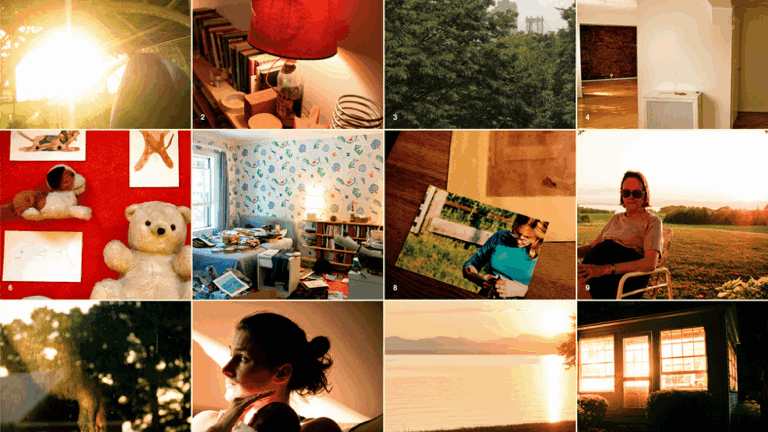Update: This Top 5 was compiled in 2012. You might also like our 2014 Top 5 feature about the best storytelling tools.
Storytelling and technology are both nothing new. What’s new is today’s digital revolution, bringing with it cutting-edge connectivity, media convergence and interactive techniques that promise to better than ever represent reality.
Considering the wealth of devices and platforms to tell stories that blend forms, styles and technologies, it is overwhelming to choose the cream of the crop in terms of the most accessible, collaborative, and engaging.
In this edition of the Top 5 Storytelling Apps, we’ve sought out the best mix of computer and mobile apps that capture today’s storytelling landscape. From discovering pictures and audio recordings in your city to collectively documenting the history of the world, what unites these digital forms of expression is an explosion of public participation.
1. Broadcastr
Whether traveling to new cities or walking about our own, we’re inseparable from our nearest and dearest — our mobile phone. Now a location-based app modernizes audio-based storytelling and turns our phone into a collaborative multimedia guide full of trivia recordings.
The central concept behind Broadcastr is “your movement through the world becomes your search query”. Go ahead and discover the history of your neighborhood, listen to chef recommendations for a particular restaurant or hear someone’s very intimate memory of a place. You can also contribute and record your very own story that’s pinned to a place. Just open up the map interface, and look for stories already around you or from locations that mean something to you.
Broadcastr is like a new-age, participatory, museum audio-guide except this once guides you with citizens’ recordings around the entire world. And it’s on a sleeker-looking device.
2. HistoryPin
Today we’re crowdsourcing information not just about all the places we go to but also a history of these places in the past. An all-in-one digital map/history textbook/photo album that we can contribute to becomes handy in a society that places an increasing importance on geographic location.
Using HistoryPin, people from all over the world can share their glimpses of the past to ‘build up the huge story of human history’. Developed by a non-profit in partnership with Google, the website features special collections of content surrounding a topic and tours that lead you through a story via pieces of content pinned to a map. HistoryPin is also collaborating with tons of archives and museums so people can explore and interact with history in new ways and make comparisons across time, submit memories about a place, and piece it all together to improve what we know.
Not sure where to begin? Dive into the collections, narrow down by date or subject, or start locally and follow a route to discover what’s right around the corner in your neighborhood.
3. Cowbird
A deeper and more personal kind of storytelling has arrived on the web. “Cowbird is a simple tool for telling stories, and a public library of human experience” and it seeks to “pioneer a new form of participatory journalism, grounded in the simple human stories behind major news events”.
This digital adventure is just the latest in a string of unique storytelling projects by artist and storyteller Jonathan Harris, who also brought us We Feel Fine, the visualization that harvests the emotional web. Described as a participatory audio-visual diary project with stories from everywhere, Cowbird’s look and feel corresponds. It’s all about bits of personal expression, so what you’ll come across are pictures, words, and simple sorting options for the overwhelming amount of daily contributions.
Browse by stories, people, places, special collections, timelines, and sagas – your pick. Still a staggering amount of choices? Hit serendipity and there’s no telling where you’ll end up.
4. Storify
With more and more online conversations distributed across social media platforms, a new environment for piecing together social media content has materialized. By now Storify is best known for enabling anyone to drag-and-drop tweets, photos, videos, and quotes posted by others to create a multimedia social story that gives a snapshot of what people are actually saying about a specific topic or event.
Whether used as a web or an iPad app, this type of social media curation becomes especially useful for showcasing a point-of-view that represents reactions from Youtube, Facebook and Twitter streams. Poised to change the way reporting is done, Storify is just latest in digital storytelling tools that puts the story front and center, and right at our fingertips.
Search for a story or go and create your own. Easy peasy.

5. Storybird
Short visually-infused stories are central to Storybird, a digital storytelling platform that makes use of drag-and-drop to quickly create storyboards. Whether inspired by a theme, artist, or beautiful image, story-makers are presented with a collaborative storytelling environment where they can seamlessly organize a story together with family, kids and friends.
Creating a story on the computer or iPad app is as simple as pulling illustrations from the side of the interface onto the canvas, writing bits of text, adding pages to the story, and if desired, inviting others to contribute parts of your story where the story becomes like a board game of taking turns. Once you’re finished with content, Storybird will automatically generate a cover for you, you can publish your story in the form of a book, and voila.
Not ready to pen your own story? Just make a reading list of what’s already out there (lots of kid-friendly books) and be inspired.
 Submarine Channel
Submarine Channel



